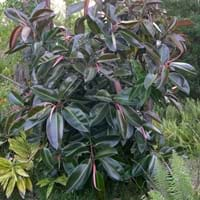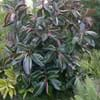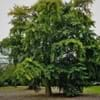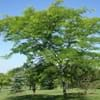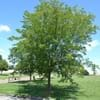Life Span
Perennial
Perennial
Origin
Southern Asia, Southeastern Asia, India, Nepal
Hybrid origin, Mexico, Central America, South America
Types
not available
Not Available
Habitat
agricultural areas, Along Railroads, Coastal Regions, Forests, Roadsides, Scrubs, Suburban areas
Coastal Regions
USDA Hardiness Zone
10-11
11-15
Sunset Zone
H1, H2, 16, 17, 19, 20, 21, 22, 23, 24
A1, A2, A3, H1, H2, 1a, 1b, 2a, 2b, 3a, 3b, 4, 5, 6, 7, 8, 9, 10, 11, 12, 13, 14, 15, 16, 17, 18, 19, 20, 21, 22, 23, 24
Habit
Upright/Erect
Upright/Erect
Flower Color
Not Available
Yellow
Flower Color Modifier
Bicolor
Bicolor
Fruit Color
Yellow, Yellow green
Red
Leaf Color in Spring
Red, Dark Green, Crimson
Green, Dark Green
Leaf Color in Summer
Red, Dark Green, Crimson
Green, Dark Green
Leaf Color in Fall
Red, Dark Green, Crimson
Green, Dark Green
Leaf Color in Winter
Red, Dark Green, Crimson
Green, Dark Green
Leaf Shape
Elliptic to oblong
Ovate
Plant Season
Spring, Summer, Fall, Winter
Spring, Summer, Fall
Sunlight
Full Sun, Partial Sun, Partial shade
Full Sun
Type of Soil
Loam, Sand
Loam, Sand
The pH of Soil
Acidic, Neutral, Alkaline
Neutral
Soil Drainage
Well drained
Well drained
Bloom Time
Not Available
Indeterminate
Tolerances
Not Available
Drought
Where to Plant?
Ground
Container, Ground
How to Plant?
Seedlings, Vegetative Reproduction
Grafting, Seedlings
Plant Maintenance
Medium
Medium
Watering Requirements
Keep ground moist, Requires a lot of watering
Needs more water during establishment
In Summer
Lots of watering
Lots of watering
In Spring
Moderate
Moderate
In Winter
Average Water
Average Water
Soil pH
Acidic, Neutral, Alkaline
Neutral
Soil Type
Loam, Sand
Loam, Sand
Soil Drainage Capacity
Well drained
Well drained
Sun Exposure
Full Sun, Partial Sun, Partial shade
Full Sun
Pruning
Prune for shortening long shoots
Pinch or prune as they grow to promote branching and bushiness
Fertilizers
don't fertilize in winter
14-14-14 Fertilizer, Compost
Pests and Diseases
Mealybugs, Red blotch, Scale, Spider mites, Yellow Leaves
Anthracnose, Aphids, Red blotch, Rust
Plant Tolerance
Not Available
Heat Tolerance, Salt and Soil Compaction
Flowers
Insignificant
Showy
Flower Petal Number
Not Available
Single
Fragrant Bark/Stem
No
Yes
Foliage Texture
Bold
Medium
Foliage Sheen
Glossy
Matte
Attracts
Not Available
Aphids, Not Available, Squirrels
Allergy
Asthma, breathing problems
Stomach pain, Vomiting
Aesthetic Uses
Showy Purposes
Used in parkland
Beauty Benefits
Not Available
Anti-ageing, Blackheads, Reduce Bruises
Environmental Uses
Air purification, soil erosion prevension on hill slopes
Shadow Tree, Soil protection
Medicinal Uses
Not Available
Dehydration, Diabetes, Diarrhea, Nutrients, Weight loss
Part of Plant Used
Latex
Fruits
Other Uses
Making rubber, Making tyres
Application in Handicrafts, Food for animals, Showy Purposes
Used As Indoor Plant
Yes
No
Used As Outdoor Plant
Yes
Yes
Garden Design
Container, Feature Plant, Houseplant, Shade Trees, Tropical
Edible, Herb, Vegetable
Botanical Name
FICUS elastica
Manilkara zapota
Common Name
Rubber Plant
sapodilla , chikoo, Sapota
In Hindi
रबड़ का पौधा
चीकू
In German
Ficus elastica
Breiapfelbaum
In French
Ficus elastica
Sapotillier
In Greek
ελαστικός φίκος
sapodilla
In Portuguese
fábrica de borracha
sapodilla
In Polish
gumy roślin
Pigwica właściwa, sapodilla
In Latin
Flexilis herba
sapodilla
Phylum
Tracheophyta
Magnoliophyta
Class
Magnoliopsida
Magnoliopsida
Family
Moraceae
Sapotaceae
Clade
Angiosperms, Eudicots, Rosids
Angiosperms, Asterids, Eudicots
Subfamily
Not Available
Sapotoideae
Number of Species
Not Available
Season and Care of Ficus Elastica and Sapodilla
Season and care of Ficus Elastica and Sapodilla is important to know. While considering everything about Ficus Elastica and Sapodilla Care, growing season is an essential factor. Ficus Elastica season is Spring, Summer, Fall and Winter and Sapodilla season is Spring, Summer, Fall and Winter. The type of soil for Ficus Elastica is Loam, Sand and for Sapodilla is Loam, Sand while the PH of soil for Ficus Elastica is Acidic, Neutral, Alkaline and for Sapodilla is Neutral.
Ficus Elastica and Sapodilla Physical Information
Ficus Elastica and Sapodilla physical information is very important for comparison. Ficus Elastica height is 180.00 cm and width 90.00 cm whereas Sapodilla height is 150.00 cm and width 60.00 cm. The color specification of Ficus Elastica and Sapodilla are as follows:
Ficus Elastica flower color: Not Available
Ficus Elastica leaf color: Red, Dark Green and Crimson
Sapodilla flower color: Yellow
- Sapodilla leaf color: Green and Dark Green
Care of Ficus Elastica and Sapodilla
Care of Ficus Elastica and Sapodilla include pruning, fertilizers, watering etc. Ficus Elastica pruning is done Prune for shortening long shoots and Sapodilla pruning is done Pinch or prune as they grow to promote branching and bushiness. In summer Ficus Elastica needs Lots of watering and in winter, it needs Average Water. Whereas, in summer Sapodilla needs Lots of watering and in winter, it needs Average Water.
